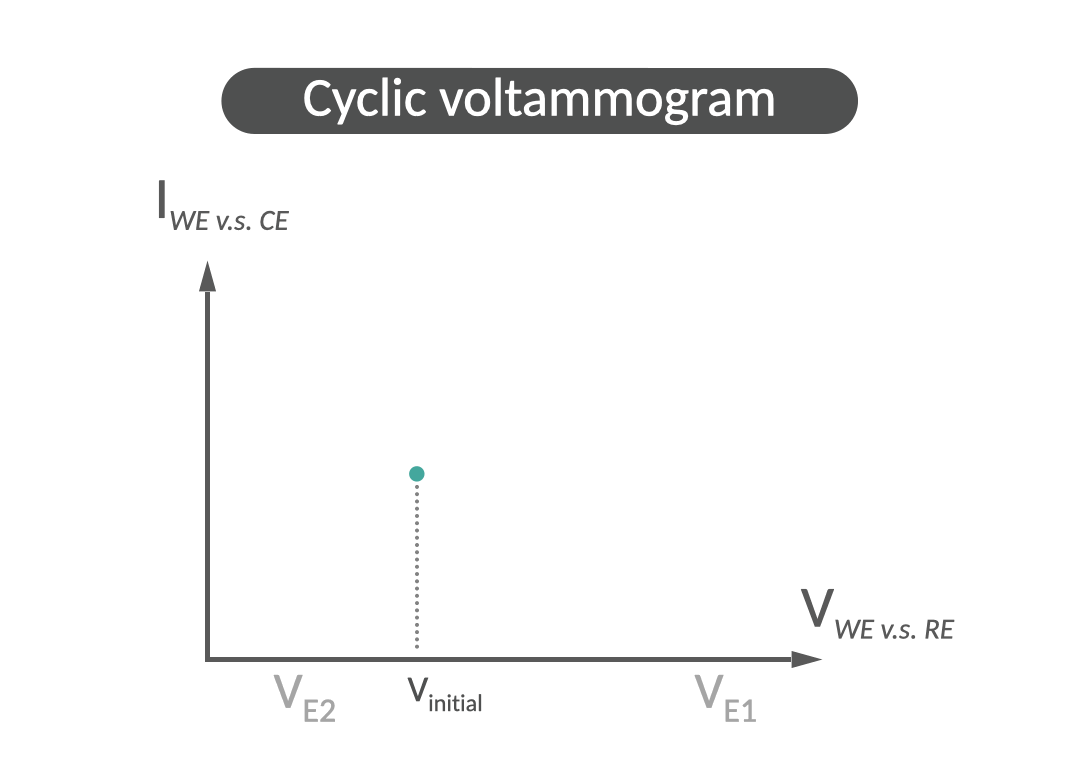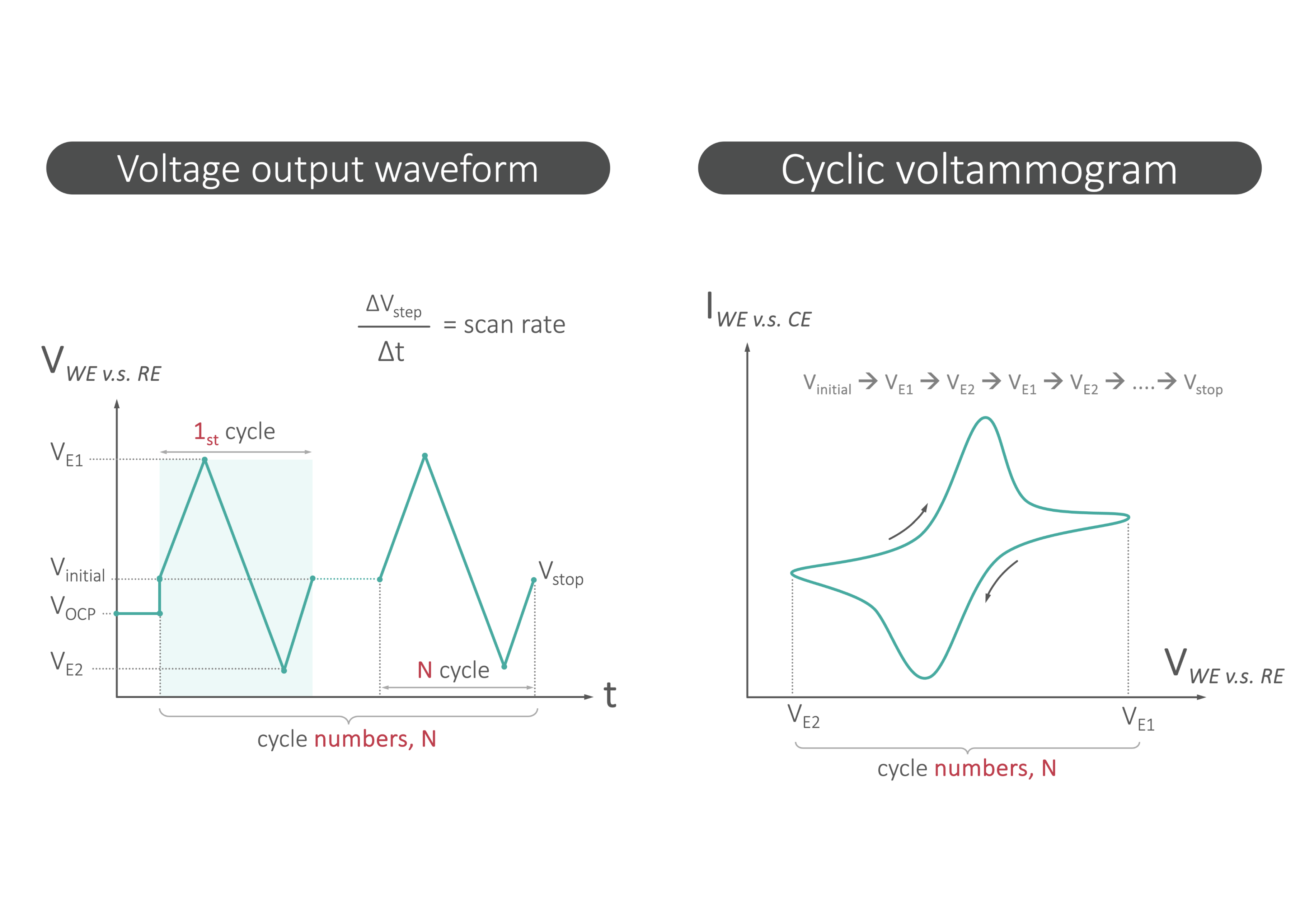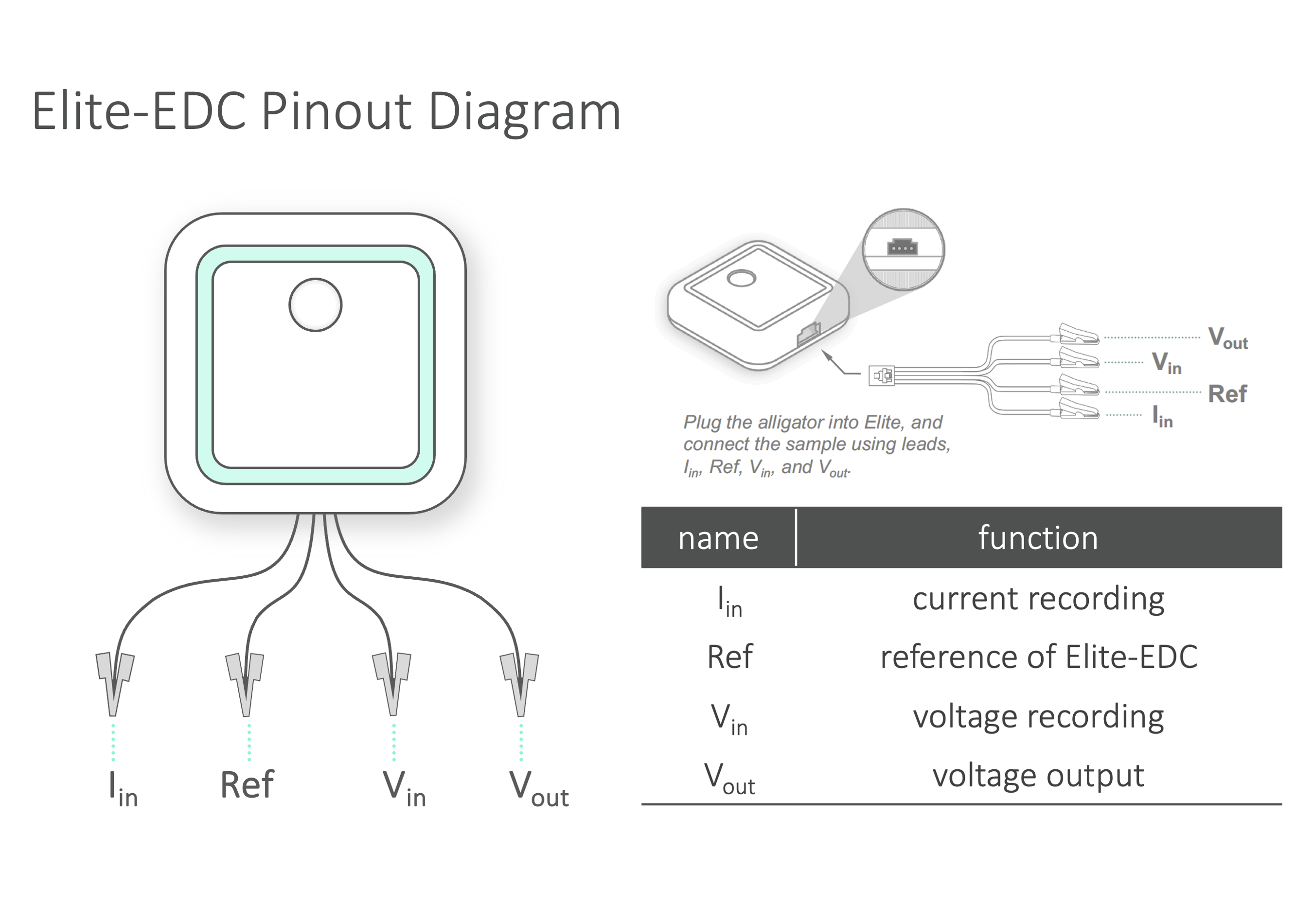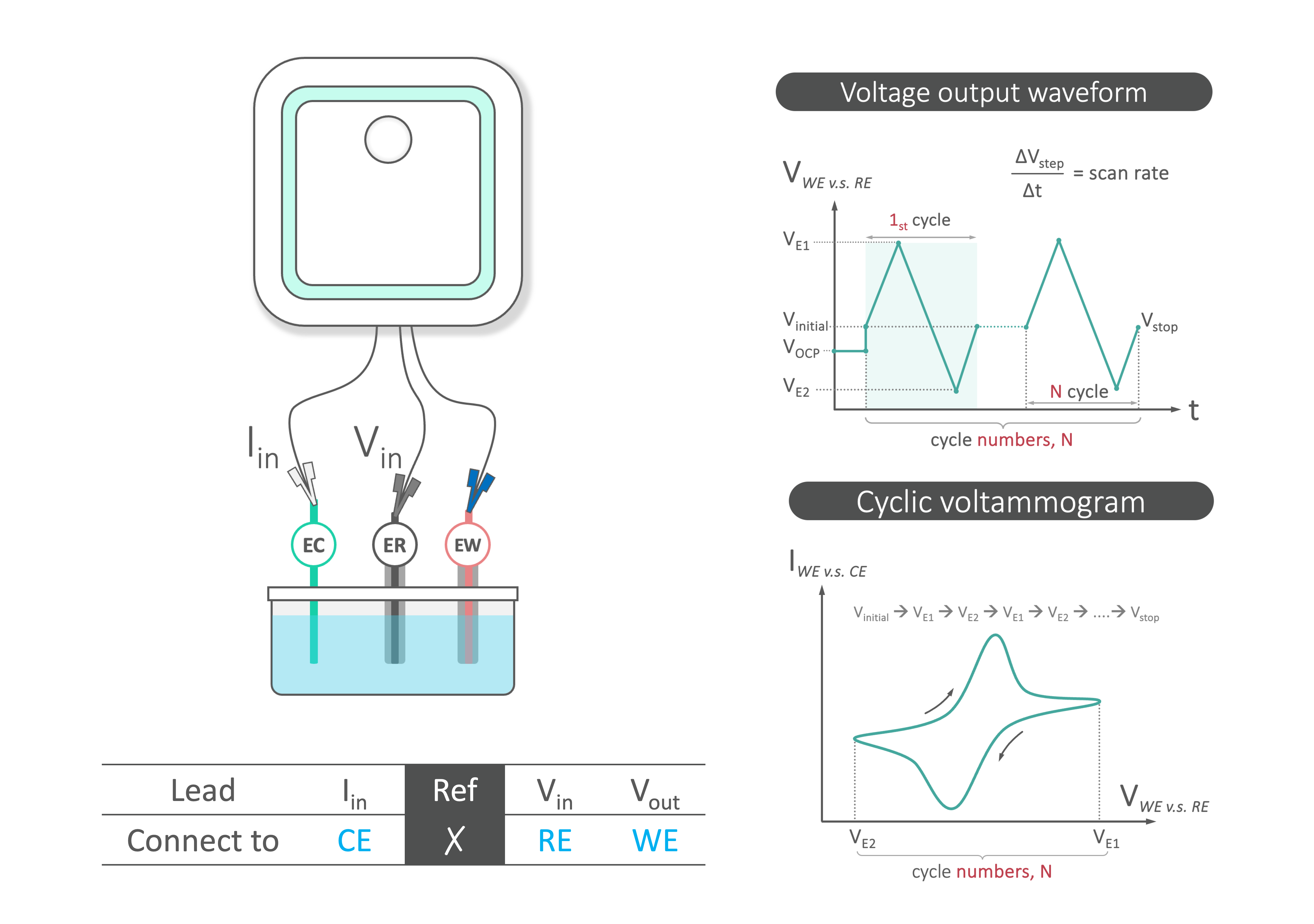Electrochemistry
Cyclic voltammetry (CV)
Cyclic voltammetry refers to one type of voltammetry technique used in the fields of electrochemistry, inorganic chemistry, organic chemistry, analytical chemistry, and biochemistry. In cyclic voltammetry, the potential of a working electrode (WE) versus a reference electrode (RE) is ramped linearly with time. After the set potential is reached, the potential across two electrodes (WE v.s. RE) is ramped in the opposite direction to return to the initial potential. These cycles in potential variations could be repeated as many times as required. The analytical data for a cyclic voltammetric experiment comes in the form of a cyclic voltammogram, which plots the current (vertical axis) versus the potential of the working electrode (horizontal axis) during the potential scan.
Linear sweep voltammetry (LSV)
Linear sweep voltammetry (LSV) is a fundamental method for characterizing electronic components and materials. Simply connect the Elite EDC with the substance to be determined as the configuration shown in figure 3 to start LSV test.
Chronopotentiometry (CP)
Cyclic voltammetry refers to one type of voltammetry technique used in the fields of electrochemistry, inorganic chemistry, organic chemistry, analytical chemistry, and biochemistry. In cyclic voltammetry, the potential of a working electrode (WE) versus a reference electrode (RE) is ramped linearly with time. After the set potential is reached, the potential across two electrodes (WE v.s. RE) is ramped in the opposite direction to return to the initial potential. These cycles in potential variations could be repeated as many times as required. The analytical data for a cyclic voltammetric experiment comes in the form of a cyclic voltammogram, which plots the current (vertical axis) versus the potential of the working electrode (horizontal axis) during the potential scan.
Chronoamperometry (CA)
Electrochemical impedance spectroscopy (EIS)
Constant frequency
Related Products

Need More Help ?
If you need any assistance, or want to know more about
our products, please contact us!



